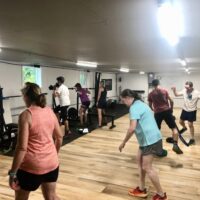A recent article has been making waves in the ski community, and for good reason!
Team Aker Daehlie, a Norwegian pro team, recently put out this piece about endurance training:
Matt Whitcomb, US Ski Team head coach, had the following to say about it:
“I think every endurance sport coach should read this. The concepts are easy to understand, and the presentation encourages flexibility and creativity. So why do so many coaches and athletes blow it? This is the low-hanging fruit to make your team better. Take an hour and read it slowly.”
I have been sharing this with athletes over the course of the week, as a follow-up to training sessions. I think that when I send out blanket emails with info, they can be overlooked, but after most every training session I’ll send a follow-up/debrief email with thoughts, video, links, etc…
Here is a little of what I wrote to the Juniors, which I think can be carried-over to other club members, leaders, and parents. Take a look if you like, after reading the article above.
Adam’s Notes to Juniors
(apologies for the strange paragraph spacing which I can’t seem to correct)
I think this article can (and will) create lots of discussion among us. The more we are all talking about training from this kind of perspective (articles, notes, discussions, etc) the better we are as a group not just because we KNOW this information, but because we apply it and work with it.
When you know why we do certain sessions, timetrials, paces, etc, it increases the benefit of those sessions.
There is something to be said for your ages and experiences here, too. This article was written by a coach of a pro team of athletes of mostly adult age, who are incredibly fit and experienced. It’s important to remember that a year ago, the Norwegian coach of Olympic champ Simen Hegstad Krueger gave a presentation discussing how, until age 16, Krueger did no L3/threshold and all of his training was either short, hard L4 or races.
Skiers on different rungs of the developmental ladder have different needs, and react (literally on a physical level) to different types of training. Throw puberty into the mix and you then have even more need for individual approaches and understanding of what is appropriate and beneficial.
Also keep in mind our group: wide range of ages, wide range of abilities, lots of different experience and backgrounds in terms of physical strength, technique, and years in the sport. The discussions surrounding this are what I think we can gain the most from, and make this article “our own”…what do we do well, and what could we do differently? How should a ski club like ours incorporate material and lessons from this piece? How are we similar or different from elite athletes, and what does it take to bridge that gap?
This sport involves compromises, moreso for Junior/teen athletes, and especially Junior athletes in school balancing multiple academic and sports schedules. I think that’s what we need to be aware of when we dive into material like this article, and as I referenced above that’s where we can take ideas from this and shape it into concepts that work for us, while also keeping us grounded and aware of the dangers with certain types of training methods/attitudes/cultures.

Team Aker Daehlie athletes training





Comments are closed.